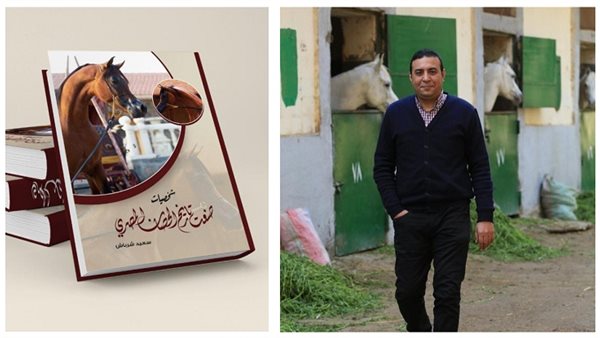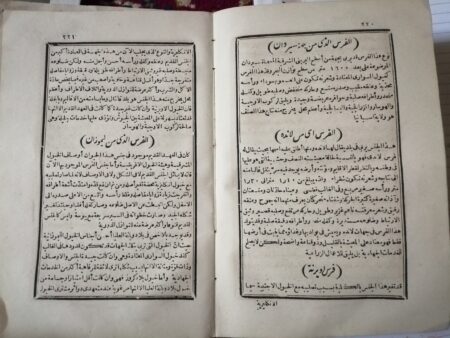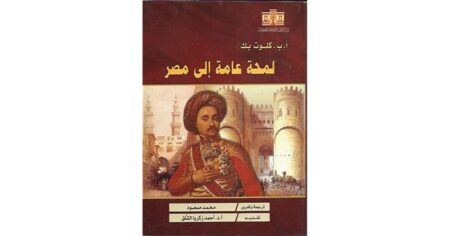The journalist and writer Saeed Sharbash, author of the book Persons Who Made the History of the Egyptian Horse, says in a preface to the book: Many foreign historians and orientalists wrote a lot about the history of the horse in Egypt, and viewed the main books; In search of the history of horses in Egypt, such as: Behavior in the States of the Kings by Al-Maqrizi, and Subh Al-A’sha in the Insha Industry of Al- Qalaqshandi, but no book was issued in the Egyptian Library in particular, and the Arab Library in general, that records this history; To be a reference for future generations .
And we are keen that the history of the horse in Egypt is written in all impartiality from the reality of the documents and documents that we have obtained; We searched in books and references issued in several countries, and dealt with what was written by researchers, such as Lady Anne Blunt, Mrs. Judy Forbes, Mr. von Hegel, and Dr. Erwin Adolf Bedoch.
We also dealt with what was written by orientalists of this stage, as well as their different points of view, such as Burkhat and Sadlier, the French veterinarian Hammond, and the manuscripts of Abbas Pasha I, which is the first reference to record the origins of the Arabian horse, as well as the study of Al-Anqari issued by the King Abdul Aziz House, And what was written by the sign of the Arabian Peninsula, Sheikh Hamad Al-Jasser.

The writings of Prince Muhammad Ali Tawfiq are also an important reference for researchers, as he dealt with many important information about the history of the horse in Egypt, which is a map for deciphering the symbols and talismans of an important stage in the time period of his grandfather Abbas Pasha I and Ilhami Pasha.
The book includes an explanation of horses in Egypt since the time of the pharaohs and their interest in breeding them. It also refers to a group of personalities. Ahmose is considered the owner of the first horse breeding program; He wanted to produce strong horses; so that only two horses could pull the chariot; To be more flexible and evasive in the fighting against the Hyksos, where they used three horses to pull the chariot, and the word “Sais” is derived from the old name “Ssem”, and the method of bridle, cursor and squid was the first to be used by the ancient Egyptians.
Ramses II recorded lines for horses; To make sure that future generations will be aware of the origins of horses.
As for Napoleon of ancient Egypt, “Thutmose III”, during his reign, horses gained great fame among all nations. It was mentioned in the Torah (1 Kings – 4:28 and 29) that our master Solomon, peace be upon him, used to buy the horses he needed from Egypt..
The Egyptian horse had an important role in spreading the Islamic call. The Coptic King of Egypt “Al-Muqawqis” gifted the Holy Prophet, may God’s prayers and peace be upon him, Al-Lazzaz, and the Egyptian horse “Al-Donqlawi” played a major role in the year 300 AH..
Amr Ibn Al-Aas was interested in horses when he conquered Egypt, and his successors, and witnessed interest in varying degrees from other kings and sultans in Egypt, including Ahmed Ibn Tulun, and his son Khamarawih succeeded him in this, who established fields for horse racing. The royal horses were known as “Al Bustan al-Kafoury.” Al-Muizz Lidin Allah Fatimid was keen to establish stables, so he established the Tarma stable and Gemayzeh stable. The Ayyubid state was also interested in horses, as it was a state that faced many threats and wars with the Crusaders, and horses and knights were the most important elements of winning in battles..
As for the Mamluks, during their reign, horses witnessed a lot of prosperity, in addition to blogging. Sultan al-Nasir Muhammad ibn Qalawun bought the famous Arab skilled earring for 64 thousand dinars of gold, and there is another narration that he gave Muhammad bin Issa, brother of Prince Muhanna 100 thousand dirhams, and a meager eighty thousand dirhams. It was also named after his name, The Kitab Kamel Al-Sina’atyn by Ibn Al-Bitar, which was known as the Nazarene Book. .
As for the era of Muhammad Ali, it is the era that laid the foundation for the modern Egyptian horse kingdom, which was established by his grandson Abbas Pasha I, who is considered the greatest breeder and tamer of horses. This is recorded in the book “Letters of Orders for Prince Muhammad Ali Tawfiq.” Ali Pasha Sharif was interested in preserving the treasures of horses in Egypt, as he bought a group of horses belonging to Ilhami Pasha, which were offered for sale after his death. The princes continued to preserve Egyptian horses, so Prince Ahmed Kamal established Stables for horses in Matariya and Baraka. Prince Ahmed Kamal is considered the first governor of Ali Pasha Sharif’s horses and the legal heir to her, not Lady Anne Blunt, as the Orientalists and foreign writers mention. Shams, Sultan Hussein Kamel and Prince Kamal El-Din Hussein Saft Qayed.
For the first time, a list of horses named Ali Pasha Sharif, Prince Ahmed Kamal, and Prince Kamal El-Din Hussein is published.
We continue to present events and personalities until the beginning of the idea of establishing a horse breeding department in Bahtim. The book also deals with the uses of the horse in Egypt.





